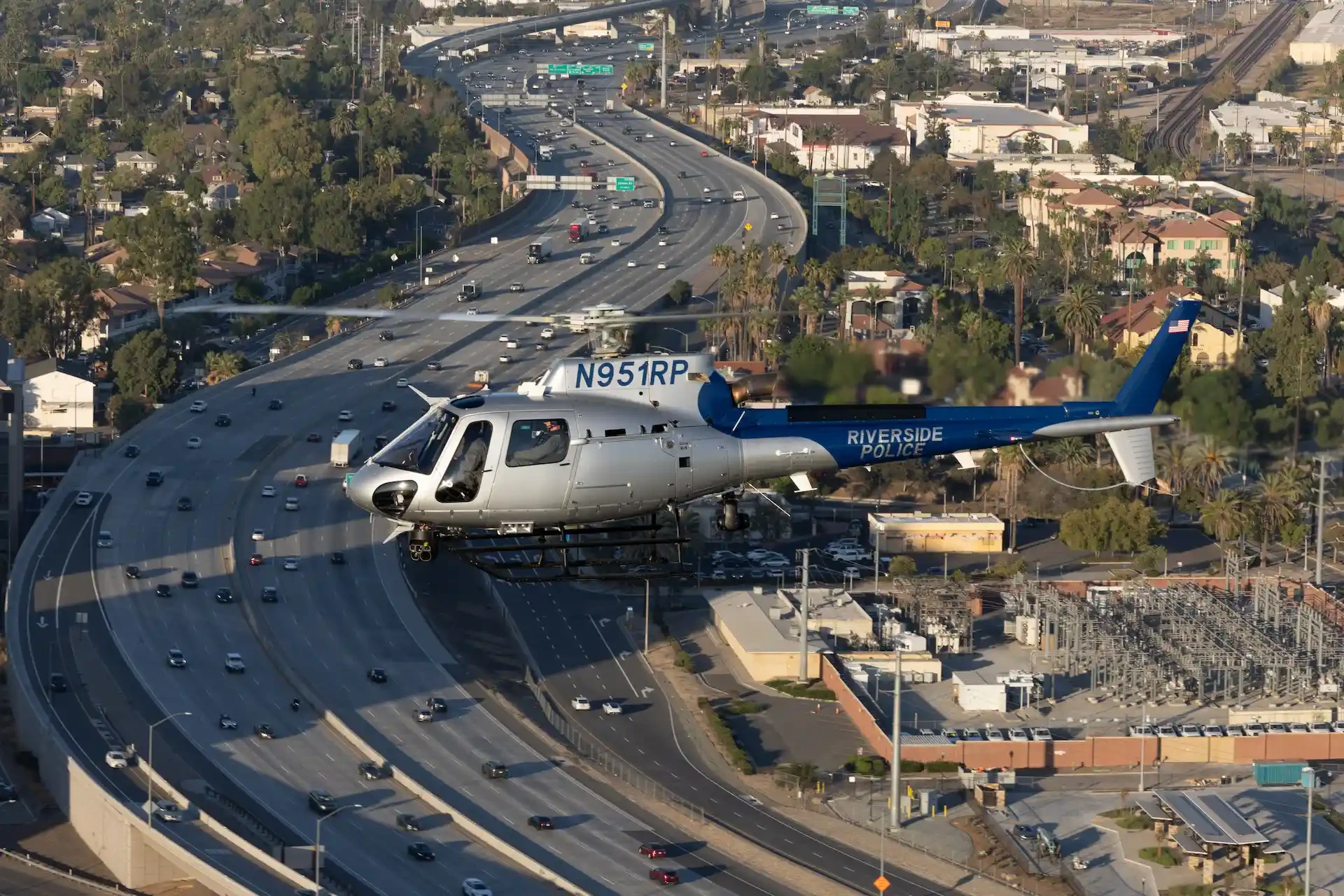The City of Riverside Police department first established an air unit in 1971 with a single Bell 47G-5 dedicated to its ACE (aerial crime enforcement) program, to become one of the first law enforcement aviation units in the USA. The unit soon progressed to the Hughes/MD 500 series of aircraft, operating them for decades until a recent shift to Airbus.
In December 2021, the City of Riverside Police Department ordered a pair of new Airbus H125s to replace MD500 series aircraft in its Air Support Unit (ASU) fleet. The unit’s area of responsibility for Riverside city is around ninety square miles but additional coverage of adjacent areas takes the total to about 150 square miles. Riverside sits at just under 1,000ft AMSL but ASU aircraft operate at up to 4,500ft when covering some of the adjacent locations that include mountainous, forested terrain. Temperatures can reach 110-115oF (43-46oC) during the summer so their aircraft need good hot-and-high performance.
Lieutenant Denny Corbett has been in charge of the ASU for almost five years, and he oversees six permanent full-time pilots and two TFOs
that serve either two or three years on the unit in that position. All crewmembers must be sworn police officers with frontline experience
and the current pilots all began on the unit as TFOs or relieving TFOs with an average of ten years ground experience, then rolled into
pilot positions after successfully progressing through the pilot selection process. “That experience enables the flight crew to understand
what is going on down on the ground, what resources may be needed, what tactics should be implemented and how to be most effective at
communicating with other units,” observed Chief Pilot Chris Tavaglione.
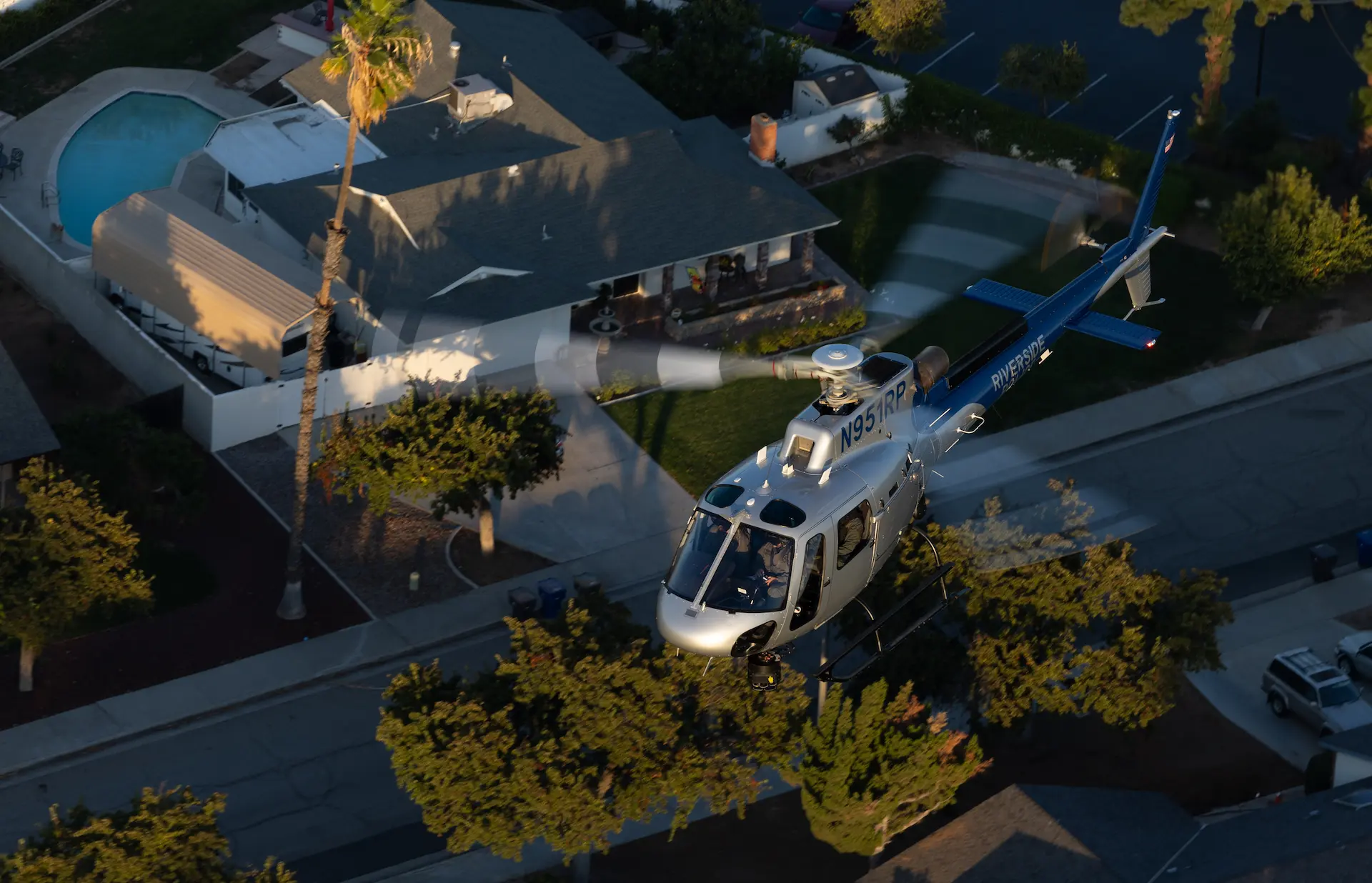
Reliability the Key
When Corbett took over as OIC of the unit, the project to update the fleet had been ongoing for around fifteen years. He advised that maintenance issues relating to the 500s then provided the impetus to finalize the change and stated, “There was one occasion when we were down for three months on one machine, waiting for parts. We could take that to command staff and push for progress because with the number of calls for service we get, we’re busy all the time and there is a definite need for the aircraft. That opened the door for us to also bring up the safety concerns.” While the Police Chief and Deputy Chief were ex-ASU commanders and understood the need for new aircraft, Director of Maintenance Matt Pagano commented that a precautionary landing on a prestigious local golf course in May 2021 due to a faulty electrical connector highlighted the maintenance and aging issues with the 500s to city management and the public, giving further ammunition to the push for funding new machines. “They were already aware that we’d been bringing this to their attention, but I don’t think they quite appreciated the severity and importance of moving to a new platform until then,” added Corbett.
Corbett outlined the unit’s progression through the different aircraft it has operated. “The reason for the shift to the 500 was that we
grew out of the Bell 47. With all the police equipment, the capability of the 500 far exceeded that of the 47 which was an antiquated
aircraft. It’s very hot here in the summer so we were still very limited in pulling power in the 500 with the amount of mission equipment
and everything else it had on it. Sadly, the 500 is an amazing aircraft and it has a ton more power than it’s been certified for, especially
with the modern engines and F-model transmission. We did fight fires with the 500 and although it was difficult, we did it, but we couldn’t
do any more or expand our missions because were capped with the 500’s performance limitations. We do a lot of rescues and to use the 500,
we’d have to strip some equipment out of it and take doors off. For us to move forward, grow as a unit and do more, we need a more capable
aircraft,” he stated.
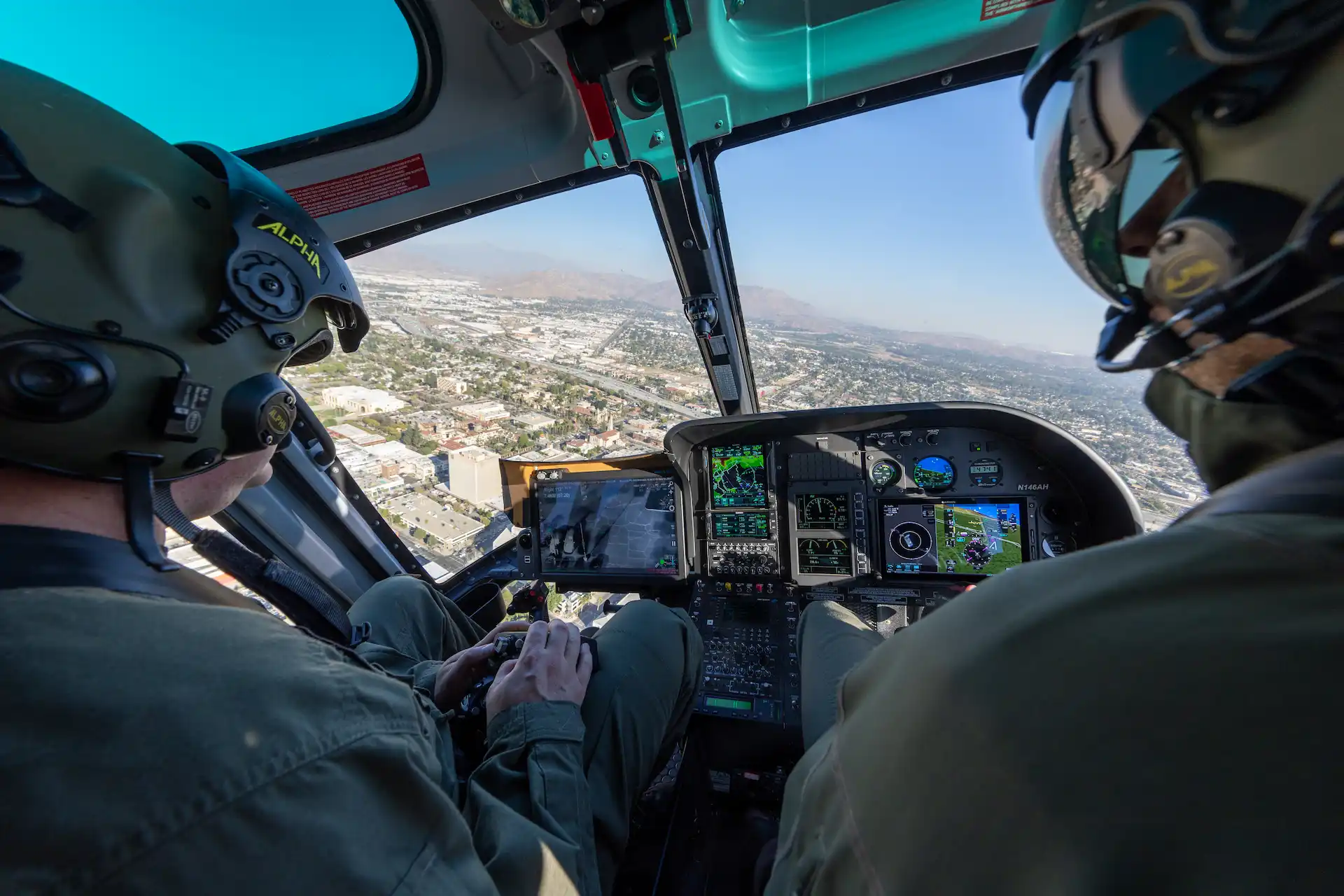
Change Challenge
After so many years with the 500 series, there was an understandable desire to remain with the type due to advantages such as familiarity, parts inventory and established support network. Corbett explained, however, that the small machine was simply not capable of fulfilling the desired missions as its size and weight limitations made fully fitting it with the desired amount of latest technology equipment problematic at best. “We were putting antennae all over the 500 and you want 2½ft between some of them, but you don’t have the luxury of doing that on the 500’s small airframe,” he advised. He acknowledged that although staying with the 500 was a less expensive option than changing type, the downsides of the older, smaller MD aircraft far outweighed the fiscal benefit.
Corbett claims that although upgrading to the H125s was a more expensive option than new 500s, the total extra cost is not as high as it would first seem, as the maintenance and downtime costs of the older MD machines offsets some of the extra cost of the Airbus aircraft and back-end support infrastructure. Funding for the H125s at eleven or twelve million dollars was eventually sourced from the City of Riverside’s ‘Measure-Z’; a public safety tax fund that is typically used for such assets as police vehicles, fire appliances and other public safety equipment. Once endorsed by the Measure-Z board, the proposal went forward to the city council for their vote to approve it. After several presentations over an extended timeframe, approval for the fleet upgrade was finally granted and Tavaglione commented that one of the greatest selling points for the upgrade was getting an H125 sitting next to one of the unit’s 500s, then letting the council members directly compare both aircraft and speak to the unit members one-on-one.
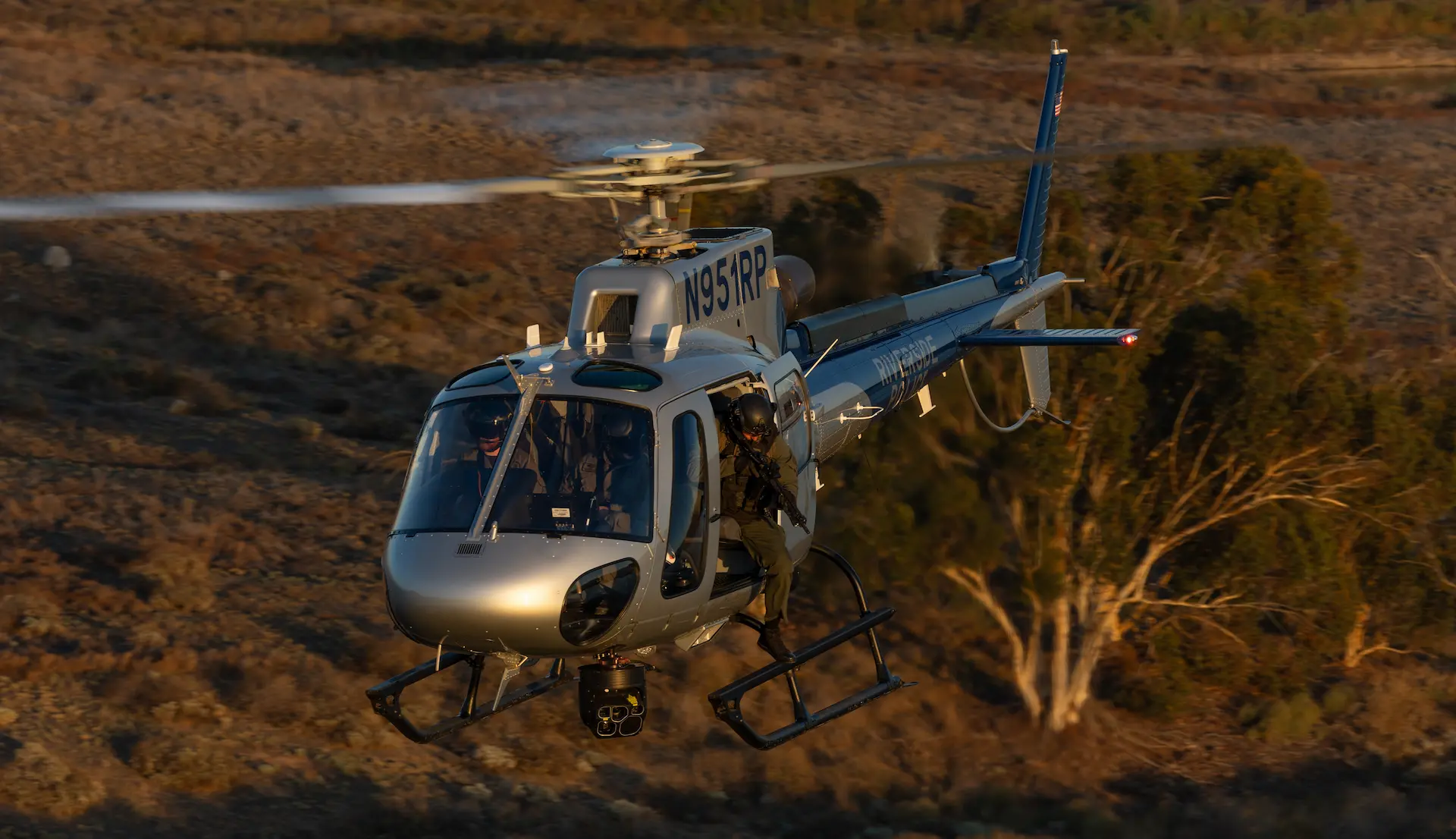
The unit’s aircraft are obviously primarily law enforcement assets, but also serve as overall city assets. “Stressing that is one of the ways we marketed it to the council,” Tavaglione commented. “With the external load, we have a Bambi Bucket so we can help the fire department with firefighting and with the Shotover we can provide them with fire mapping and real-time downlinking to the fire commanders. The city has its own electric and water utilities, so we also go up on a regular basis for IR inspections of transmission lines and substations.” Tavaglione also reported that on one occasion in 2016, pilot Steve Quinn even saved a train while flying with him as an observer. An intoxicated driver crashed his car on railway tracks at night in a residential neighborhood and the helicopter crew realized a train was heading towards the scene. With Tavaglione flying very low ahead of the train, Quinn used the searchlight to sweep back and forth over the tracks ahead of the train until the engine driver realized there was an issue and managed to stop the train a mere 50 to 60 feet short of the crashed vehicle. Corbett remarked that those types of incident help prove the unit’s value to decision makers in the city and help secure adequate funding.
Tavaglione pointed out that in the 500, occupant safety is compromised due the lack of free space. When avionics or other equipment must be fitted beneath the seats, it reduces or eliminates the effectiveness of the 20G-rated crash attenuating seat and crush-box structure. Corbett noted that because the H125 has the extra power, can carry a greater amount of equipment and increases mission capability, it significantly reduces crew stress – thereby increasing safety – and reduces physical effort. “If we have to rescue or recover an injured officer, for example, the H125 makes it far simpler. Most officers are not small; they tend to be taller, more muscular and heavier so getting one into a 500 can be very difficult,” he explained. Tavaglione added, “Despite the greater amount of equipment and technology on board in the new aircraft, with the amount of digital information we have presented to us the workload is less. “We have terrain avoidance, TCAAS and synthetic vision, and there’s audio information from some of those systems so it’s also reassuring for the TFO because he knows the pilot is getting all that information.”

Decision
The unit did acquire an AS350-B2 some years ago, but at that time did not have the financial or logistical capability to properly support the different type and ended up trading the B2 for a fully outfitted MD500-E. “That was at the time of the housing crisis and some agencies were even closing down their aviation units. We were struggling just for fuel money then, so it made sense,” noted Pagano. Several other types were considered when the time did come for fleet replacement, with cost factors making the Bell 505 a contender but, as Pagano pointed out, Riverside’s altitude and temperature conditions made it an unsuitable aircraft for the unit’s mission roles. “With the 505, we were really gaining no performance or capability advantage over the 500s,” he opined. Leonardo proposed the AW9 but didn’t bring it to market, while a new 500E or -F conversion failed to overcome the disadvantage of the smaller machines. With other options eliminated, the final approval was focused solely on a pair of H125s.
Hangar One carried out the completion and integration on Riverside’s new aircraft and Pagano was lavish in his praise for that firm’s quality of work and customer service. There were virtually no delays beyond the forecast timeframe and the unit took delivery of the first aircraft in April 2023. The color scheme was inspired by that on Fuchs Helikopter’s H125, with curving lines separating the blue tail boom and silver fuselage, simple but attractive and unlike the straight lines on most law enforcement machines.
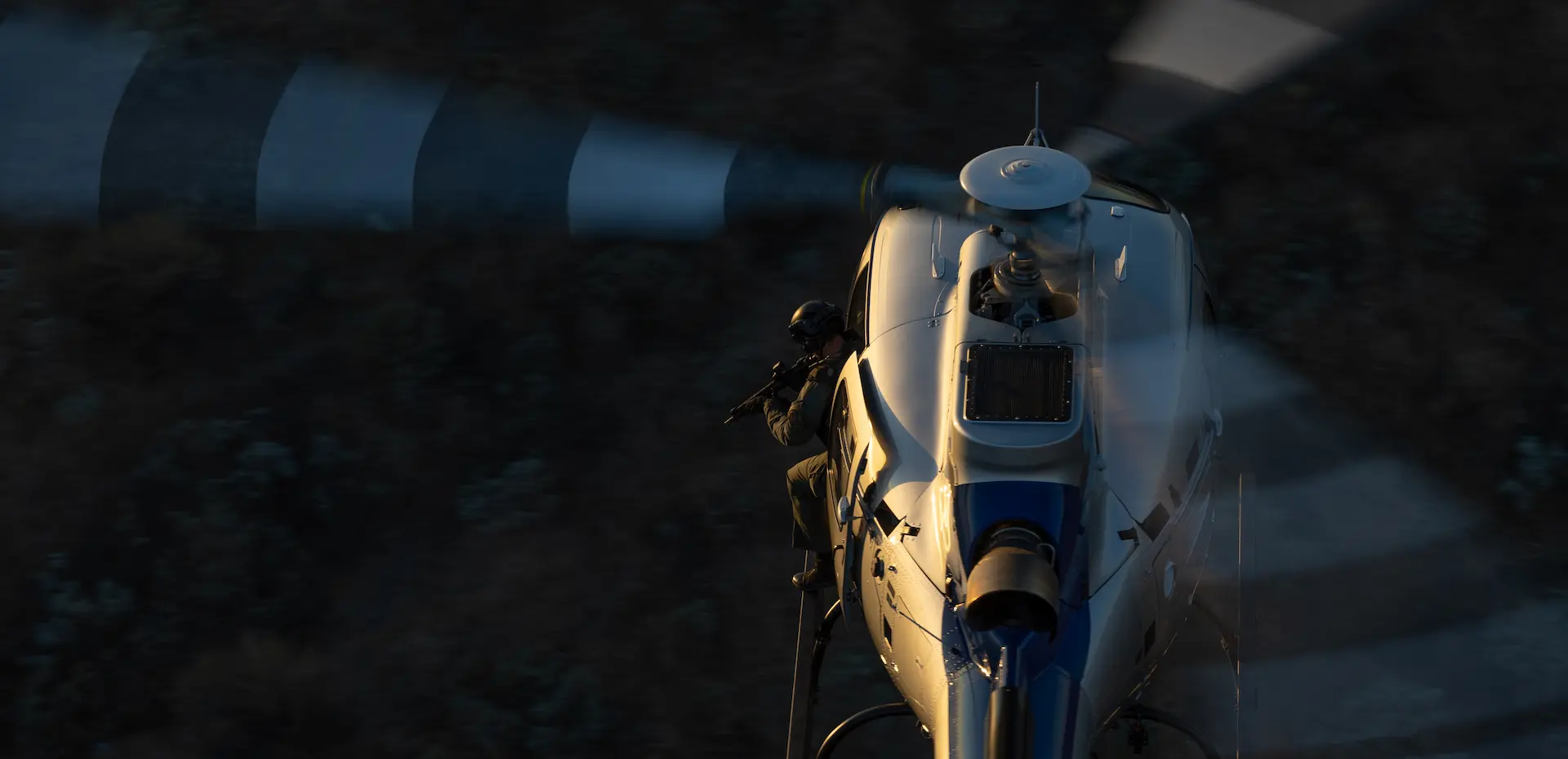
The H125s’ fit-out includes Garmin 500, 650 and 750 avionics, Macro-Blue screens, a Garmin 3-axis autopilot with auto-level – a major safety advantage if inadvertently entering IMC, Becker avionics/comms and Technisonic tactical radio, Shotover gyro-stabilized camera turret, 380-HDc FLIR with IR laser and illuminator and a TrakkaBeam searchlight with an IR illuminating lens cover, able to be slaved to the camera. The pilots commented that the slaved searchlight takes a lot of the workload off the observer and also acts as a useful beacon for ground personnel enroute to the call, something that has not been common since FLIR superseded the traditional searchlight. The H125s are equipped with a downlink system that allows ground personnel to receive and view imagery from the helicopter’s camera in near-real-time on iPad or iPhone devices.
Tavaglione had equally high praise for the customer service from Shotover systems and related that a few years ago, the company worked with Quinn to modify its overlays to show the layout of individual classrooms within 127 schools in the Riverside and Corona areas, rather than the standard overlay display of simply the school building outline. This was due to the rising incidence of mass shootings in school environments, recognizing the value of such detailed information when directing responding law enforcement units. In a similar vein, he explained that Riverside utilizes the license-plate-reading Flock camera system, as do surrounding areas and the results are available over a common network. This enables a continuity of coverage and detection of suspect vehicles even after they leave the local area.
Cool and Comfortable
Unlike the unit’s MD aircraft, the H125 have air-conditioned cockpits and Tavaglione remarked upon how much less fatiguing that made flying. “After a two-hour flight in the 500 with the doors off, you’d come back really beat,” he related. Normal operating altitude is 500ft AGL during the day and 1,000-1,500ft at nighttime and the unit works two shifts that work both reactively and proactively. Dayshift stretches from 7 a.m. to 5 p.m. and night shift runs from 4 p.m. to 2 a.m., leaving the five hours between 2 a.m. and 7 a.m. without routine flying. “Our mission hasn’t changed,” observed Corbett. “We’re there first and foremost to support patrol, although we’ll respond to whatever calls are sent to us. Where I see the H125 increasing our capability is in search and rescue or firefighting, where its external load capacity will make a huge difference.”

The helicopter is a force multiplier and Tavaglione stated that the H125 can be up roughly twice as long as the 500, adding further to the effectiveness of the aerial asset. “We’re getting into NVGs as well,” added Tavaglione, advising that both new H125s are NVG compatible. “We’ve always flown at night without NVGs and although we pushed for them in the 500s, the cost of upgrading the panels was a prohibiting factor for an old aircraft that was hopefully going to be replaced.” He pointed out that the IR laser and illumination in the new machines is also a major benefit when working with aircraft from other agencies that are flown on NVGs. “That’s an added capability that we’re getting into, that we haven’t been able to do in the past and NVGs are an added safety feature for night operations.”
Police missions can involve close working collaboration with K-9 and SWAT units and the H125 makes the development of an aerial shooting platform program a real possibility, something the limited load capacity of the 500s previously made impractical. According to Corbett, some unit personnel will shortly be visiting Texas DPS to assess their aerial shooting platform program and report back to Riverside command. He added that it is intended that a Riverside program would not be limited to deploying onboard SWAT shooters, but to have the unit crews trained so that TFOs can switch in flight from the TFO role to the aerial shooter role in situations requiring immediate response.
Transition
Quinn commented that the transition to the H125 was not as difficult as he had anticipated. “We knew there would be some growing pains with the new platform, and I was most worried about my footwork because everything’s backwards compared to the 500. When it comes to the gauges and everything else, once you train your mind where to look for each thing, I actually find it’s much easier now. Everything’s digital and super-easy to read and I really love that radar altimeter. It gives you more information, it’s easily digestible and it’s all in one spot.” He praised the H125’s available power and greater tail-rotor authority, commenting that knowing that makes everything easier from a psychological standpoint when flying the rather abnormal flight profiles that the mission demands on fairly frequent occasions. “Our orbits have gone from a 60kt minimum in the 500s to a 40kt minimum in the H125 because the tail-rotor authority is so much higher,” added Tavaglione.

“From the maintenance side, the transition imposed a huge learning curve,” commented Pagano. “I cannot say enough good things about the technical support that Airbus and Safran have. They are a ten-out-of-ten for me, and I have local tech’ reps for both of them. We are the last to jump into the pool with Airbus in this area, so I also have people in all the surrounding agencies that I can call, and they can and do help me.” Most of those agencies have also shifted to Airbus from MD aircraft, so are well versed in the issues associated with the transition. While rebuilds for the H125’s Safran engine are roughly twice the price of the MD powerplants, its longer TBOs and service intervals offset that to a significant degree. A major budgeting benefit is the ‘power-by-the-hour’ program that allows maintenance to be spread out, covered monthly, and eliminating the massive occasional costs of overhauls. “It is much easier for me to maintain the Airbus machines in a state of mission readiness than the 500s,” Pagano reported, citing the more generous service intervals as a primary factor.
When the H125s first arrived, the unit was very busy testing the new equipment and conducting thorough training for all flight crewmembers. This almost doubled the usual amount of flying for the first few months but with training and familiarization virtually completed, flight hours were not expected to vary to any great degree with the new aircraft. The expectation was for around 800hrs per aircraft, which is the average flown by the 500s over the last several years, but the entire department is now well aware that the unit fields two new, highly capable aircraft that are up most of the time. Corbett said that this has resulted in almost double the usual number of calls for service, so the annual flight hours total is a constantly shifting target as things stand. “That’s a good thing though, because the city put all that money into these aircraft and they should be getting used,” he pointed out. By November 2023, one aircraft had clocked up about 750hrs, while the other had logged just over 300. Pagano explained that the difference was intentional, allowing him to stagger the rather lengthy 750hr inspections.
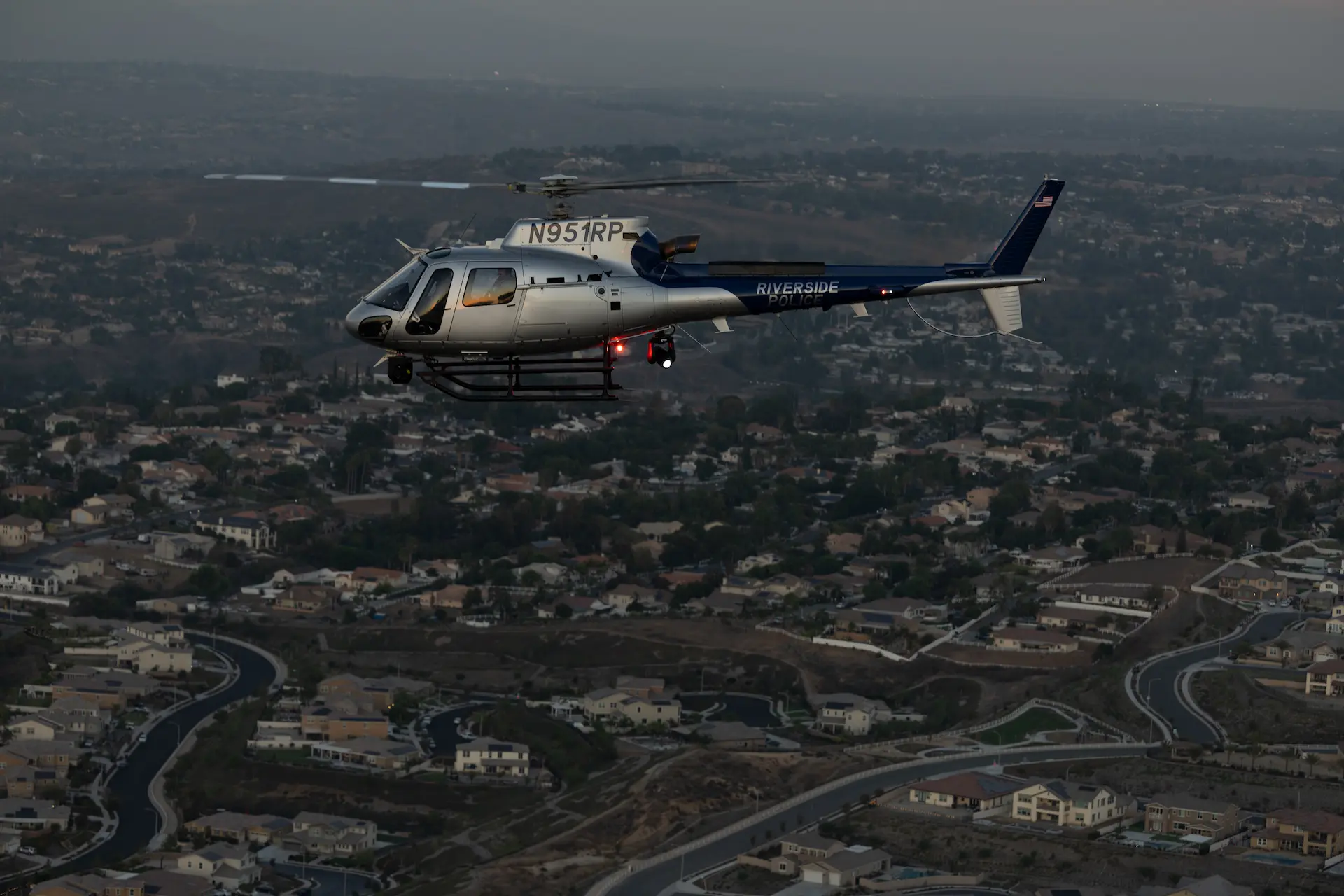
Regarding changing from the 500s to the new aircraft, Pagano compared it to switching from a 1970 Chevelle to a 2024 Mercedes. “I love the 500. It has its place and there are agencies that can certainly benefit from having it, but we’ve just outgrown it for where we want to be, moving forward,” he remarked. Corbett stated that he has been reassured by Pagano finding the Airbus machines easier to work on and get parts for than initially feared, and he observed that the flight crews all displayed a more relaxed and confident demeanor at work since the successful introduction of the H125s. According to Tavaglione, he feels that the unit has finally caught up to the times. “It definitely feels like we’re where we need to be and the future looks good for us with these new aircraft,” he commented. “The 500 is a ton of fun to fly but for our mission profiles and what we do, you couldn’t ask for a better aircraft than the H125. There’s a reason that every agency around us has changed from the 500s and gone to the H125.” Quinn considers himself a relatively low-time pilot and he stated that the extra power and safety of the H125 has let him feel more relaxed when flying, able to concentrate less on flying and more on other tasks and the mission. “A lot of work by a lot of people went into getting these new aircraft and all of us here on the unit are extremely appreciative of that work and the support we’ve been given throughout the process,” he emphasized.
 HOME
HOME


